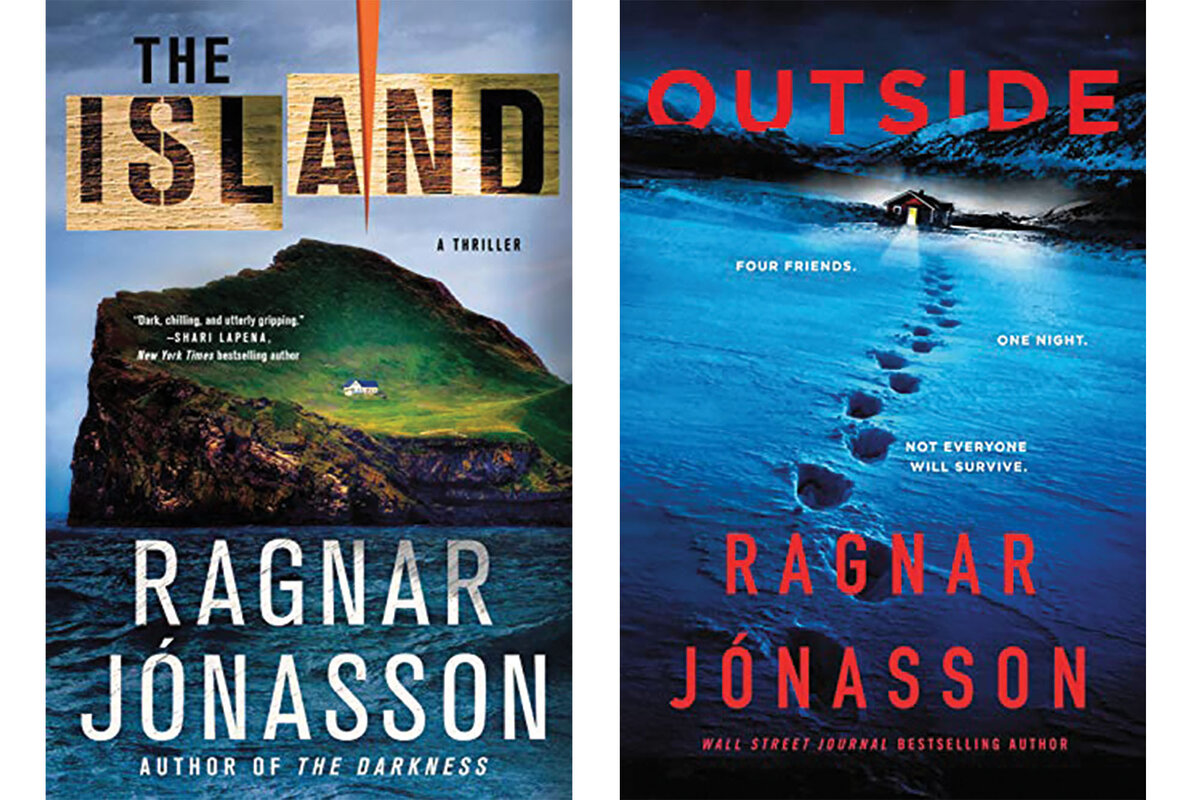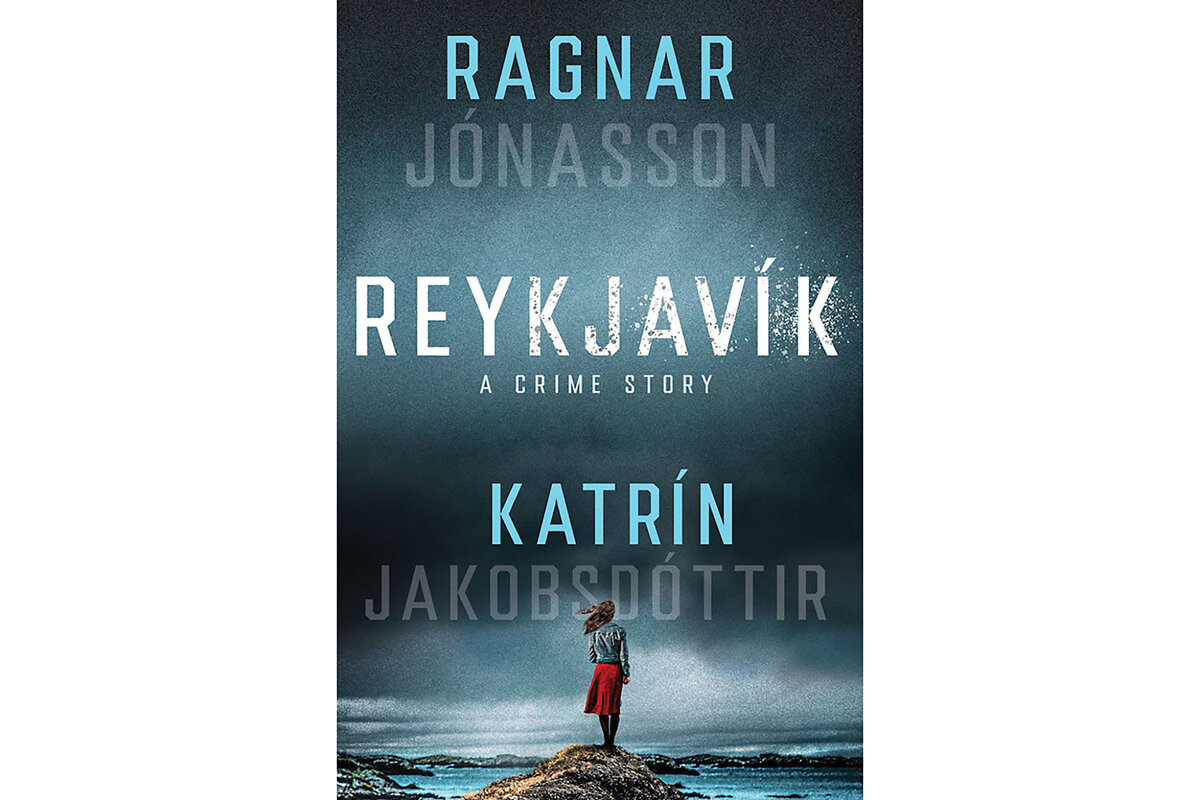To craft Nordic Noir novels, Scandinavian authors draw on Viking tales
Loading...
The sea wind is merciless. It slices and whips the swirling snow into a frenzy. Volcanic lava fields blacken the treacherous landscape.
Danger skulks everywhere in this ancient Nordic realm, and the heroes and villains slashing their way through the unforgiving terrain are extraordinary.
They must be. Because more than a thousand years later, we’re still talking about them. The pull of pop-cultural interest in all things Norse and Viking, especially in the United States but also in Britain and the rest of Europe, is striking. From streaming series and movies to video games and comics – if it’s Norse-themed, it sells.
And not to be forgotten are all those Nordic crime novels. As a literary trend, the Nordic Noir genre fits neatly into this heady brew of fire, ice, and slaughter.
While Nordic Noir novels may share some elements in common with other crime stories – an angst-ridden or morally ambiguous detective as the protagonist, for example – they evoke a particular mood. There’s a distinct element of the cold, bleak, unforgiving, and beautiful that’s quite Scandinavian in its noir take on wrongdoing and its consequences. It’s about the essence of Norse values – honor and reputation – that are made or lost depending on one’s actions.
This has its roots in Norse mythology, which is filled with a lively brigade of heroic gods and chaotic denizens. The Norse creation myth itself is, as Neil Price explains in his 2020 book, “Children of Ash and Elm: A History of the Vikings,” “the universe as crime scene: ... an unsettling story, full of strangeness, violence and contradictions.”
Nordic Noir writers know all about this. From Sweden’s Henning Mankell to Norway’s Jo Nesbø and Arnaldur Indriðason in Iceland, to name but a few, all of them, intentionally or not, tap into this Viking cauldron of peril and menace.
The influences that have shaped Nordic Noir go back to the Viking era, which lasted from the ninth to 11th century. During that time, accounts of daring Viking voyages, love, war, betrayal, and heroism – featuring a pantheon of gods, trolls, giants, dwarfs, and humans – were all part of a rich oral tradition. In the early 1200s, these stories were written down by Christian scholars into what became collections of Old Norse poetry and Sagas (Saga was the Norse goddess of history) set in pre-Christian Iceland. These compilations are known as The Poetic Edda and The Prose Edda.
The structure and pacing of the Icelandic Sagas are singular in their style. They portray mostly Icelandic individuals acting out their lives – often feuding and performing audacious deeds – against a backdrop of otherworldly beings, and sometimes indirectly, Norse gods. The Sagas are distinctive in their storytelling approach in this way. And they are the very fabric of the Norse character to the literati who study them.
One, for example, is Icelandic Nordic Noir author Ragnar Jónasson.
“In Iceland you really grow up reading the Sagas in school, and I was fascinated by them when they were introduced to me and even today – it’s a powerful part of our cultural heritage,” he says. Mr. Jónasson is the award-winning author of the “Dark Iceland” series and the forthcoming novel “Death at the Sanatorium.”
“The style is pretty direct,” he says, “The style of the Sagas has influenced a lot of Icelandic authors.”
Carolyne Larrington agrees. She’s a professor of medieval European literature at St. John’s College at the University of Oxford. Her most recent book is “The Norse Myths That Shape the Way We Think.”
“The Saga style, objective and dispassionate, and the structure of [the] Sagas, often centering on a killing, its buildup and aftermath, has much in common with Nordic Noir,” says Professor Larrington.
So does the Old Norse mythology inform any of this writing genre? Björn Nordfjörd doesn’t think so. Dr. Nordfjörd teaches literature and film at St. Olaf College in Minnesota. His specialty is Nordic Noir.
“I don’t see a lot of the Old Norse material figuring directly into the novels,” he says. But the Sagas, he adds, are another matter. “Because with the Sagas, you’re talking about a writing style, about character construction.”
Fair enough. Maybe not directly. Still, the Sagas convey an ambience thick with twitchy uncertainty. It is a fireside narrator’s command of the small moment, a pause in the sentence and the rustle of dead leaves that might conceal a wolf with flaming eyes.
This is true of Mr. Jónasson’s stories. Although undeniably Nordic Noir, his crime novels are gentler, for lack of a better word, than many of his genre counterparts. His readers aren’t likely to encounter multiple corpse-strewn pages. In fact, his recent work, “Reykjavík” (co-written with Katrín Jakobsdóttir), has nary a stiff in sight until more than halfway through the book. What you do find are nuanced character studies. And that’s intentional, Mr. Jónasson says, because his model as a crime writer is more apt to be found in the pastoral villages and cozy tea rooms of Agatha Christie’s St. Mary Mead than in the seamy back alleys of Oslo.
“I did not grow up reading Scandinavian crime; I came to that pretty late,” says Mr. Jónasson. “So there’s much more influence in Agatha Christie and P.D. James. And in those stories, it’s [the] characterization [that] is very important and the motives behind what is happening.”
Mr. Jónasson recalls a conversation he once had with Ms. James, who said for her, it was always about exploring the impact of a crime on a community and on the innocent. And that, he says, is also his intent.
“What interests me is in various struggles,” he says. The procedural part of it, he says, must be there to fulfill the requirements of the genre, but for him, it’s all about “the stories of the people involved.”
But what about all those gods, giants, trolls, and heroes battling across glacial chasms, through gloomy forests, and over craggy mountains down to the roiling sea?
“We’re quite proud of this heritage,” says Mr. Jónasson. “And so, we’re keeping up with that tradition in a way.”









